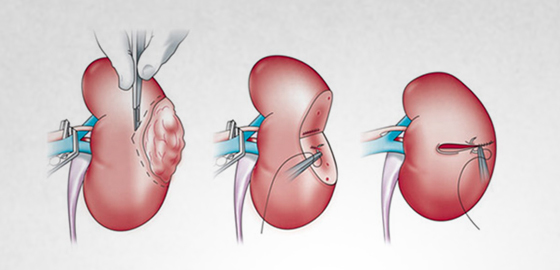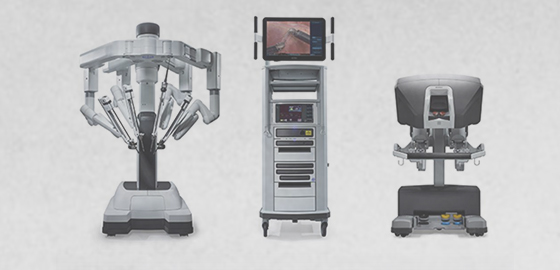

Renal tumours are most commonly detected during health checkups or when one presents for some other ailment and investigations are performed. Hence the importance of periodic health check-ups cannot be stressed enough.
Commonly mentioned symptoms of kidney tumours including blood in urine, flank pain and a palpable mass are present only in advanced cases where a complete cure is not feasible.
Earlier the diagnosis of kidney tumours involved surgical removal of the entire kidney. In recent times the need to remove the entire kidney has been negated. Nephron sparing surgery has ushered in a sea change in the management of this otherwise fatal disease. It involves removing the tumour with a rim of normal tissue thus getting rid of the cancerous tissue and sparing an others normal kidney.
Again the advent of minimally invasive surgical procedures like laparoscopy and robotic surgery have substantially reduced the size of the incision, recovery period and the time to return to normal life.
There are approximately 1 million nephrons in each human kidney and together they are responsible for various functions of the kidney including maintaining fluid balance in the body, filtering waste material, producing haemoglobin, promoting bone health, regulating blood pressure and much more.
When a tumour is detected in a kidney, the ability to remove just that portion of the kidney allows a significant percentage of normal kidney function to be retained, which is even more important in a diabetic or a hypertensive who might in due course of time undergo further deterioration in kidney function due to these diseases. Even in a normal individual preserving kidney function by performing such surgery has produced wonderful results.
This involves careful dissection of the blood vessels (renal artery and vein) and their branches and then selectively clamping that branch of the vessels which feeds the area of the tumour. Then an incision is made around the tumour excising the tumour with a small rim of normal renal tissue. This part is then send to the pathology department - a process known as frozen section - where a quick examination reveals whether the tumour is malignant and if yes, has the tumour been completely excised. This allows a complete and total resection of the tumour allowing a radical cure.
Open surgical procedures of Partial Nephrectomy resulted in large incisions with significantly delayed recovery and post operative pain.
The Da Vinci Robotic system allows a minimally invasive approach which under general anaesthesia allows 3-4 robotic arms to be inserted through 1 cm incisions and allows the dexterity and manoeuvrability of the human hand to be replicated inside the body with minimal incisions. Visualising the entire field with 3D vision allows for wonderful precision, reduced blood loss and absolute surgical comfort and ease.
The post operative pain is reduced by a great degree and so is the recovery period and enables very early return to normal life.
This procedure is also a boon for the operating surgeon as its performed on a console which allows him greater comfort and ease thus reducing surgical time, room for error and surgical fatigue.